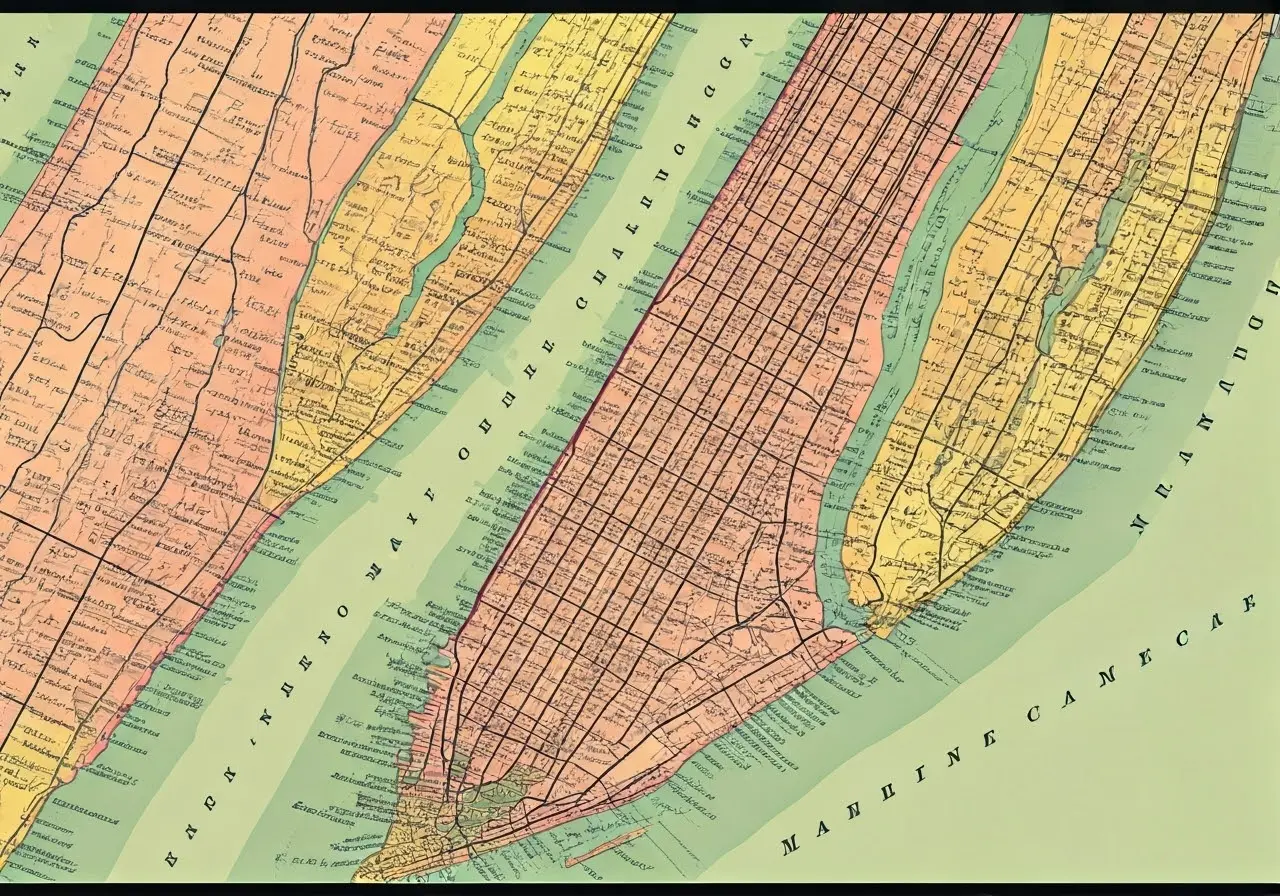New York City, one of the most iconic cities in the world, is made up of five distinct boroughs, each with its own unique history and character. But where do these names come from, and what do they reveal about the rich tapestry of NYC’s past? Let’s explore the fascinating origins of Manhattan, Brooklyn, Queens, the Bronx, and Staten Island.
The Origin of the Name Manhattan
The name ‘Manhattan’ is derived from the Lenape word ‘Mannahatta,’ which means ‘land of many hills.’ The Lenape were the original inhabitants of the area before Europeans arrived. Understanding the origins of the name Manhattan gives us a glimpse into the indigenous history of the region.
The story of Manhattan extends beyond its original name. The Lenape people’s connection to the land is deeply rooted in their culture and traditions. European colonization significantly altered this landscape, but remnants of the past can still be felt today in place names and cultural references.
Interestingly, Mannahatta was more than just a name; it described the rich, hilly geography of the island that was a dramatically different landscape from the bustling urban center we know today. The transformations over time reflect the dynamic nature of New York City and its ability to evolve with changing needs and times.
Why Brooklyn is Called Brooklyn
Brooklyn’s name comes from the Dutch town ‘Breukelen.’ Early Dutch settlers named it after their hometown, carrying their heritage across the Atlantic. This reflects the Dutch influence in the early development of New York.
The name ‘Breukelen’ was more than just a nod to home for the Dutch settlers; it embodied the hope for new opportunities and reflected their desire to recreate their lives in a new world while retaining ties to their homeland. It’s a testament to the enduring influence of Dutch culture in shaping early New York.
Today, Brooklyn is known for its diversity, creativity, and thriving arts scene. Yet, its name reminds us of the borough’s origins and the rich tapestry of immigrant stories that form the backbone of its identity.
Queens: A Royal Connection
Queens was named in honor of Queen Catherine of Braganza, the wife of King Charles II of England. This royal connection highlights the city’s ties to British history and its settlers.
Naming Queens after a royal figure was a symbol of the political and cultural ties between early settlers in New York and the English Crown. It underscored the importance of allegiance and the influence of European powers in the development of what is now the most ethnically diverse urban area in the world.
Despite its royal roots, Queens has developed its own unique identity, characterized by vibrant cultural diversity and a strong sense of community. The borough continues to be a melting pot of cultures, languages, and traditions.
The Bronx: Named After a Settler
Jonas Bronck, a Swedish settler, lent his name to the Bronx. The usage of a European name marks the expansion and settlement of new lands by immigrants striving to establish communities.
Naming places after settlers like Jonas Bronck was common practice as a way to honor those who were among the first to explore and cultivate the land. This tradition helped to immortalize their contributions in the landscapes they helped to shape.
Today, the Bronx is known for its rich cultural heritage and historic landmarks, such as the Bronx Zoo and Yankee Stadium. While it bears the name of an early European settler, the borough is a lively testament to the vibrant mosaic of cultures that define New York City.
Staten Island’s Name and Its Roots
Staten Island was named by Dutch explorers who referred to it as ‘Staaten Eylandt,’ honoring the States General of the Netherlands. This name reflects the administrative connections and appreciation of Dutch colonial rule.
The use of ‘Staaten Eylandt’ underscores the colonial imprint of the Dutch on the New York region. As one of the earliest parts of New York to be settled, Staten Island holds a significant place in the historical narrative of Dutch colonization.
Today, Staten Island is the least densely populated borough of New York City, known for its parks and green spaces. While it retains the name given by Dutch explorers, the island has grown into a community with its own distinct character and charm.
Unlocking NYC’s History Through Its Names
The names of New York City’s boroughs are more than just geographical indicators; they are keys to understanding the city’s diverse historical fabric. Each borough’s name reflects a piece of New York’s transformation from a cluster of settlements into a vibrant modern metropolis. By exploring these origins, we gain insight into the cultural influences that have shaped this remarkable city. Visit our homepage to discover more about New York’s real estate and history.


